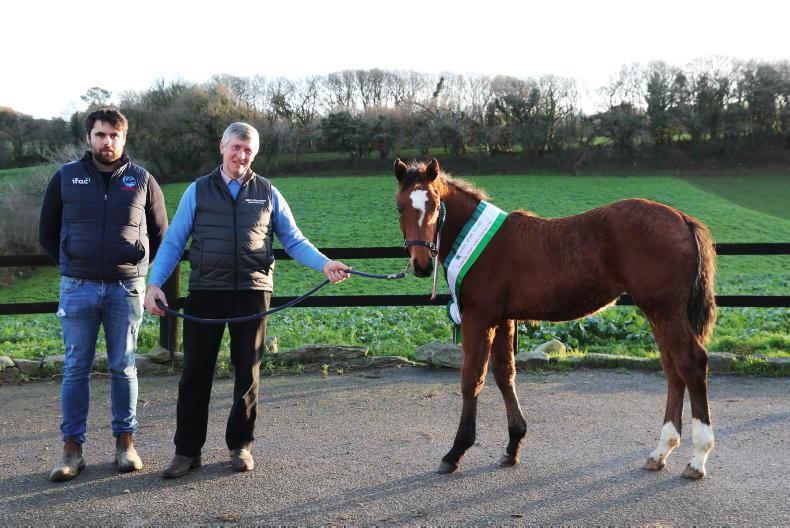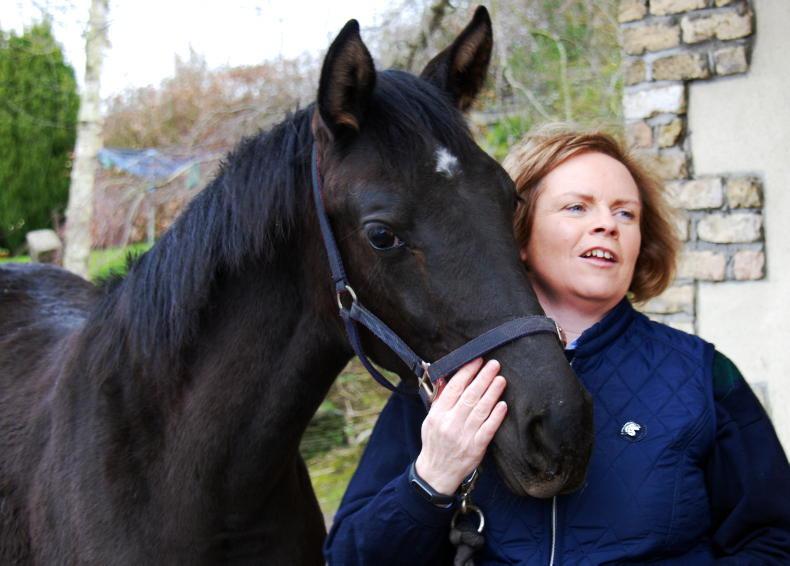After much progressive work to obtain additional funding, Horse Sport Ireland (HSI) was very fortunate to receive a substantial uplift for its proposed breeding and production initiatives in 2020 of €1m from the Department of Agriculture Food and the Marine (DAFM).
I am happy to report that every cent of this allocation went back to the breeders and producers in Ireland, and 90% of the €1m was received by active breeders, who participated in quality improvement and production schemes. The funding reached all 32 counties in Ireland.
Based on feedback and suggestions, following review by the Breeding and Production Council of HSI some amendments have been made to schemes for 2021.
The x-ray screening, embryo transfer, thoroughbred percentage and mare upgrade schemes will run again in 2021. All details of these schemes are available at: https://www.horsesportireland.ie/breeding/breeding-initiatives/.
Last year, the breeding year started off as expected with the first major event of the year, the HSI Stallion Selections, which took place in Cavan Equestrian Centre on 10-11 March. Two young stallions, Lithium V.S. and Kaiden Leva WD both met the criteria to be classified as Preliminary Approved in the Irish Sport Horse Studbook.
In addition, two sport horse stallions passed Stage 1: Carneyhaugh Trojan and Kentucky LVP. In the Irish Draught Studbook selections, seven stallions achieved Class 1 status: Cappa Capone, Carraigstud Jack, Derrynasagurt Silver, Gweebarras Dreamtime Star, Liosderg Silver, Moylough Supremacy and WRS Sunshine.
As the Covid-19 pandemic unfolded, the focus of national breeding initiatives was changed to mitigate its negative impact on breeders. Of particular concern was the risk that many horses were not going to be produced in 2020 and efforts focused on limiting the long-term effects of this. All initiatives were carried out within the framework of the Covid-19 protocols for sport horse equestrian activity.
Embryo transfer scheme
The embryo transfer scheme has been very popular over the last four years, and the first foals have competed in the foal championships and will be produced this year. The technique has several advantages for potential breeders/owners of top performance mares.
The donor mare can produce multiple foals per season while remaining in competition, thus the risk of foaling for the donor mare is eliminated. There were 51 donor mares and 91 embryo transfers that met all the eligibility requirements for funding last year. Following the success of previous embryo transfer schemes, HSI decided to continue funding the initiative which seeks to maximise the genetic potential of quality mares.
Speaking about the scheme, show jumper Linda Courtney said: “Embryo transfers are expensive, so the support from HSI is greatly appreciated. However, it would be great to see a bit more investment put into the scheme as it is so successful, that would make embryo transfers more accessible to breeders.”
Mare upgrade scheme
The mare upgrade scheme was introduced last year to assist breeders to increase the availability of performance bloodlines in the country.
Less than 4% of the country’s active broodmares have competed at 1.40m level. The aim was to incentivise Irish breeders to invest in performance damlines abroad as either filly foals, active performance mares or retired performance mares that may or may or may not be already in foal.
The scheme financed the veterinary screening and transport back to Ireland of qualifying purchased high genetic merit mares/fillies. As the scheme only launched in September 2020, there were just 24 eligible applications under the mare upgrade scheme 2020 and the scheme will run from March 2021 and can also facilitate the repatriation of successful top performance Irish bloodlines, following the competition career, which will support the breeding of TIH Irish Sport horses.
Thoroughbred percentage scheme
HSI launched the thoroughbred percentage (TB%) scheme in 2019 to incentivise the breeding of sport horse foals with greater than 70% thoroughbred blood. In the four years prior to 1999 only 5% of the foal crops had 70% or more thoroughbred blood. These high percentage thoroughbreds are sought after by the high performance eventing riders.
There were 73 eligible applications processed for this scheme for foals registered in 2020. Last year, 12.4% of the Irish Sport Horse foal crop had 70% or more thoroughbred blood. We hope to see some of these foals being produced for eventing in years to come.
Breeder PJ Lehane commented: “Eventers are looking for horses with more blood, and the only way to satisfy this is to incorporate thoroughbreds into the bloodline. However, thoroughbred stallions are hard to afford, so the grant offered through the TB% scheme provides breeders with a great incentive to incorporate thoroughbreds into their breeding. Thoroughbreds are going to become very important for the future.”
X-ray screening scheme
This scheme provided breeders/owners with an accessible pathway to completing a full set of screening x-rays for benchmarking their breeding herd and incorporating the information into their breeding decisions and sire selections.
The scheme was open to fillies and mares who are registered in a World Breeding Federation for Sport Horses (WBFSH) or DAFM-approved studbook and met specific performance requirements.
HSI covered the cost of the screening in full. Each horse’s images were scored by the HSI expert radiological review panel. The horse’s images were provided back to applicants with a comprehensive report including their total score and horse – specific clinical comments. These reports and images will support breeders with regards to decision making. There were 221 horses x-rayed as part of this scheme. This scheme will also be available from March 2021.
Breaking and training scheme
The breaking and training scheme was introduced due to the reduction in the level of opportunities/activity for three- and four-year-old horses in 2020 due to Covid-19 restrictions.
The aim of this scheme was to incentivise Irish breeders to produce young breeding stock and in so doing add value to them, provide additional information to their owners and breeders as to their positive and negative traits and ultimately to ensure that more informed breeding decisions are made.
By assisting breeders to have the mares started appropriately, there is a greater incentive to continue to produce the better mares into competition through HSI’s young horse pathway competitions. This scheme also aimed to support breeders in producing their young horses despite the disruption to the 2020 competitive season and coming up to Christmas to support Ireland’s producers also. This scheme covered 181 breeders and 315 horses.
Autumn Development Series
The HSI Autumn Development Series provided development opportunities for breeders, owners and riders and extended the competitive season which had been curtailed due to the Covid-19 pandemic.
The series was supported by Show Jumping Ireland, Dressage Ireland and Eventing Ireland covering the three disciplines and providing significant prize money including breeder prizes in each discipline.
The show jumping schedule for the series included classes from young horse classes to Grand Prix. The eventing schedule included classes from EI90 through to EI110 and included a combination of eventing, arena eventing and young horse experience classes.
The dressage schedule included all levels from preliminary to Grand Prix including young horses classes. In total, the prize fund provided which included specific breeders prizes was over €150,000.
Three and four-year-old loose jumping
HSI held two loose jumping competitions for three- and four-year-old fillies in 2020, although more rounds had initially been envisaged. These competitions aimed to identify and show case young fillies that would be suitable for use as top-class broodmares of the future. The competitions saw 40 animals competing over the two days.
Foal championships
The annual HSI Foal Championship aimed to identify, evaluate, and reward breeders who have bred a foal that has the potential to be competitive at the highest level in the disciplines of show jumping or eventing.
The classes were open to any horse registered in a WBFSH studbook and any pony registered in an EU approved studbook. Five qualifiers took place at the following venues around the country (Bridestown Equestrian Centre, Wexford Equestrian Centre, Tubberbride Stables, Creagh Equestrian Centre, and Coilog Equestrian Centre) with the champions and reserve champions announced based on the highest scores over all qualifiers. Overall, over 150 foals took part in the Championships.

Breeding research and development 2020
Warmblood Fragile Foal Syndrome
Warmblood Fragile Foal Scheme (WFFS) is genetic condition, typically found in warmblood horses, which effects connective tissue. WFFS is characterised by fragile skin and mucous membranes causing painful lesions; hyperflexible joints, floppy ears, excess fluid in the foetus and premature birth.
HSI funded the WFFS screening of 2,200 foals born in 2020 in order to provide their breeders with information to support their breeding decisions, to document the prevalence of the carrier status in the Irish population. The research is on-going, and results will be disseminated to breeders in 2021.
Irish Draught Genetic Diversity Genomics
Routine monitoring of genetic diversity trends within the Irish Draught breed are carried out by HSI who are approved by DAFM to maintain the Irish Draught Horse Studbook.
This project is investigating the feasibility of augmenting the current pedigree-based genetic diversity measures for Irish Draught stallions of concern with genomic measures in order to improve their effectiveness. The research is on-going, and results will be disseminated to breeders in 2021.
Irish Sport Horse Genetic Evaluation
HSI carries out a genetic evaluation for show jumping Irish sport horses. Breeding values for show jumping ability at international level are produced which measure the difference between each horse’s genetic ability for international level show jumping and the average genetic ability for show jumping for the Irish population.
Three sources of information are used in the evaluation: pedigree, own performance, and progeny performance and over three million records are included in the evaluation. As well as stallion breeding values which are published in the stallion book, breeding values are available to Irish sport horse breeders for their own horses on request.
The results, data and expertise comprised in the project is also used to support national breeding initiatives. The Genetic evaluation report is available at horsesportireland.ie/breeding.









SHARING OPTIONS